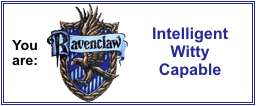 The Last Judgement
The Last Judgementby Iain Pers
originally published by Victor Gollancz 1993
paperback published by Harper Collins 2001
Iain Pears is an English journalist and an art historian. He has written a number of novels starring Jonathan Argyll (an art dealer), most of which I have read. But I was pleased to find this novel which I had not read yet. So I read this for the Art History challenge.
The last Judgement is a painting by Jean Floret called the Death of Socrates. (He is the one who was forced to eat hemlock). It was one of a series of 4 paintings all shoing the last judgements of Alexander, Solomon and Jesus. (in reality there is a death of socrates painting but it is by Jacques Louis David and the other 3 paintings do not exist)
Jonathan is asked by a dealer in Paris to take this painting to Rome and deliver it to its new owner. When Jonathan arrives at the new owners place, the owner is delighted to get the painting, looks it over and then becomes disappointed saying that he no longer wants the painting. Jonathan takes it home and when he goes back the next day to ask some questions, he finds that the owner is now dead.
The owners name was Muller, a citizen of Canada born in France but raised in Argentina before immigrating to Canada. He had a secret - he was adopted and when he was 10 years old, he found out that his real father had been a hero in France during WW2. After Muller left school, he began his hunt to find his real father.
Mullers killer was traced to Switzerland. His name was Ellman and in his apartment (Jonathans partner) Flavia de Stanio found records that indicated that Ellman was receiving 5000 every months. Meanwhile Jonatahn went to paris to ask dome serious questions of the police and ifnd out who the real owner of the painting was. He is given a name - Jean Xavier Marie Rouxel - a french hero in the reisistance during WW2, who was due to receive a top french award later that month.
It turns out that Mullers mother was an english woman married to a german based in france during WW2. She was having an affair with Jean Rouxel and she gave birth to his child. She gave the child up for adoption and never told Jean he was a father. Her german husband (Hartung) knew that the child was not his. The wife eventually became a member of the resistance against Hartungs wishes.
Jean was the leader of a resistance cell and every time they tried to commit an action against the germans, the germans would show up there and prevent it. Someone in that group was a traitor.
After the war ended some of the group were interrogated by the germans, some were executed and some were released. Proof of the story was inserted into a painting.
The story of the resistance cell that were traitors only came out some 40 years later when muller started looking for his father. He was looking for Hartung. He was killed before he discovered that the war hero Jean Rouxel was his real father.
As for the painting - the last judgement, Rouxel claimed it as his own. It turned out that he had another painting in the same series. This second painting had the proof.
This was a most unusual art history book to read - because it was not all about the painting - no forgeries, no secrets. The secret was what happend in WW2. The painting was not involved except to hold the proof.
I am not fond of WW2 stories but I did read this to the end.









No comments:
Post a Comment